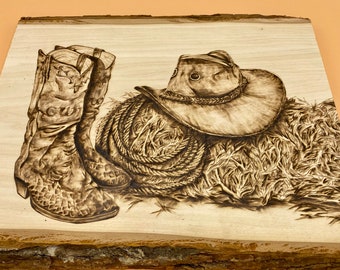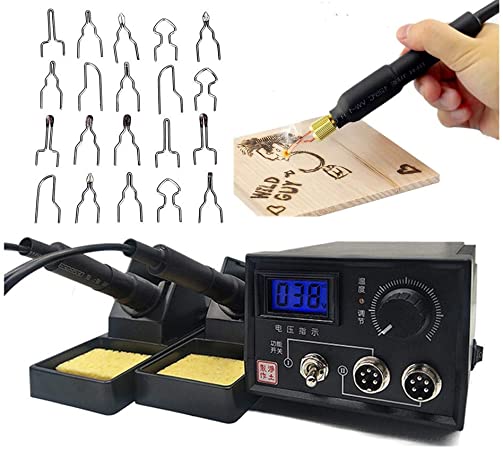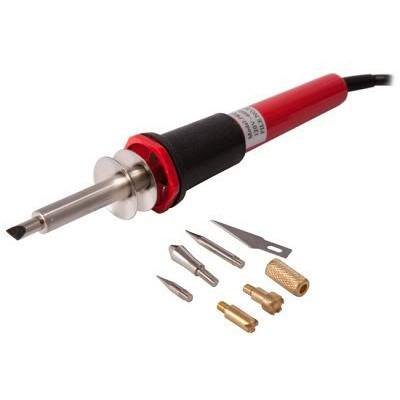
After you have completed your wood-burning project, you can decide on a color to stain it. This will ensure that the stain won't mess up your design. It is possible to apply stain in any tone or shade you want, but be careful not to use it in bright or glaring areas. Additionally, it is important to brush or char any stain first.
Staint wood
Staining wood should be considered before you start to burn it. The stain makes the wood more flammable and increases its flammability. You can choose a stain which is more flammable but remember that wood that has been stained will produce more toxic emissions. Additionally, the stain will burn at a level that is higher than you desire, which is bad for the environment.
First, decide if you want to burn the stained wood. Wood stained with stain is not allowed to be burned in many states. The reason is that wood stained by stain can be emitted into the air as toxic toxins. This is bad for the environment and can be dangerous for people with lung diseases or young children. You should learn the correct safety procedures before burning stained wood.
Charging
If you want to create a beautiful and unique look for your project, you can use a charring wood burning stain before and after technique. This technique varies from project to project, but most people choose to char wood to create a distressed look. You have two options after you've charred wood: oil it or leave it unfinished. The last method gives it a soft sheen and increased weather protection. It is also durable because it hardens over time. To maintain the wood's color, luster and beauty, it is recommended that charred timber be oiled at least once every ten years.

The charring process leaves a two or three-millimeter-thick layer of char on the wood's surface. This layer is resistant against water vapor as well as UV rays. It prevents wood decay. Charring wood can also make pine untreated suitable for exterior use. Charring wood is a great choice for sustainable building structures as it reduces or eliminates the use of chemical products.
Brushing
It is possible to make your wood product look better by brushing it before and after you burn it. A simple wire brush is sufficient to remove the carbonised residue from the wood. Brushing before and after burning is important to create a crisper edge and contrast between the summer and spring veins. Spring veins will have lighter carbon and contain less carbon. The carbon is consumed more quickly when brushing. Also, brushing wood surfaces before and after they are burned can remove excess stain and soot.
To avoid overlapping veins, keep wood burning stain separate when brushing it before and after burning. While spring veins burn faster than summer veins, the combustion process cannot be the same on all parts of the wood. This can help you achieve the right contrast by performing this technique with your nakedeye. This technique is not easy to master. It's worth it!
Sealing
Before applying a wood burning stain, remove the pyrographic process residue from the wooden surface. Wood sealants are flammable, so if you want to keep the finish intact, you should burn it before staining. You must let the wood dry completely before sealing it. Keep the nozzle at least five centimeters away from the surface to avoid pooling and unevenness. If visible droplets are present, you will need to sand them away.
You can also choose a varnish for archival quality. A varnish can be more resistant than oil and can also remove color if applied manually. A spray or liquid varnish will work best for adding colored pencil to wood burning projects. Unlike colored pencil, varnish doesn't mix with pencil wax and is not likely to smudge. Wood burning stain requires less time but preserves the finished product.
Removing

While wood burning stains can sometimes be difficult to remove, they do not have to be permanent. You can use superfine steel wool to clean up a small burn or cigarette mark. Then, wipe it off with a damp cloth. If the burnt-out stain is more severe, you can apply chlorine laundry bleach to the area to bleach it out. With a cotton wool swab, apply the solution to the stain. Allow the bleach to work its magic.
If the char is hard to remove, you can use the wire brush to clean the wood. You should not use a brush that scrapes the wood. To gouge out heavy char, you can also use a metal brush. To remove any ash, clean the wood using a microfiber cloth.
FAQ
How can my shop be organized?
First, make sure you have a designated space for tools storage. You want your tools to stay clean and free from debris and dust. To hang accessories and tools, use pegboard hooks.
What wooden items do you sell well?
Wood that has been harvested sustainably is the best-selling type of wood.
Most furniture is made from oak, maple, mahogany or walnut.
These woods have beautiful grain patterns and colors. They are also very strong. They are also very durable if properly maintained.
To prevent moisture damage, wood furniture should always first be painted. This applies to all surfaces including drawers, doors, handles, and handles.
If you want to make sure that your furniture lasts as long as possible, then you should choose a paint that is resistant to water.
You should use a high-quality oil-based primer followed by two coats of top coat. Depending on how often it will be worn, you may need to apply several coats.
Spray cans and aerosol spray paints are not recommended. These products are contaminated with solvents, which evaporate rapidly and can leave behind toxic fumes.
What kind wood should I use for my project?
Oak, maple, cherry and mahogany are the most common wood types used for woodworking. Each type of wood has its own unique characteristics that can affect the final product's appearance. Oak, for example, tends be darker and more hard than other woods. Birch is soft and light, and mahogany is denseer and heavier. You also have the option of solid wood or veneers. Veneers can be described as thin sheets of wood that have been glued together in one layer.
What kinds of woods are good for making furniture?
Woods are classified according their hardness. Softwoods are pine, cedar and cypress. Because they resist rot, softwoods can be used to make outdoor furniture. Hardwoods include oak, maple, mahogany, and teak. Because they can't weather outside, they're usually used indoors.
Statistics
- Overall employment of woodworkers is projected to grow 8 percent from 2020 to 2030, about as fast as the average for all occupations. (bls.gov)
- In 2014, there were just over 237,000 jobs for all woodworkers, with other wood product manufacturing employing 23 percent; wood kitchen cabinets and countertop manufacturing employing 21 percent. (theartcareerproject.com)
- Woodworkers on the lower end of that spectrum, the bottom 10% to be exact, make roughly $24,000 a year, while the top 10% makes $108,000. (zippia.com)
- Most woodworkers agree that lumber moisture needs to be under 10% for building furniture. (woodandshop.com)
External Links
How To
How to properly operate a handsaw
Hand saws are used for cutting wood into pieces. These saws are most commonly used to cut wood into pieces. A handsaw is a tool made out of metal or plastic that cuts material such wood, plastics, metals etc.
A hand saw's main benefit is its ability make precise cuts at any angle, without the need to adjust it. It is also very easy to sharpen them, unlike power tools. They do have their disadvantages. These devices are bulky and heavy so you need to be careful when transporting. It is possible to injure or damage your own body if the instructions are not clear.
There are many ways to hold a handheld saw. While cutting, it is important to keep your hands clear of the blades. If you don't, you might get hurt. Holding the saw in your hands, place your thumbs on the handle and your thumb at the blade's top. This will ensure that you don't accidentally touch or scratch the blade.
It is important to not put anything under the piece you are cutting when using a handheld saw. Doing this would cause the blade to slip off the wood's surface. Before you begin cutting, make sure to inspect the area. Make sure there are no nails, screws or other objects under the wood.
You should always wear safety goggles when working with a hand saw. These glasses prevent dust from entering your eyes and make it easier for you to see what's happening. Safety glasses also protect your eyes from flying debris.
Before you start working with a saw, it is important to learn how to use it safely. After that, practice until it becomes comfortable enough to start cutting. Once you are comfortable with the basics, you will be able cut almost any material.